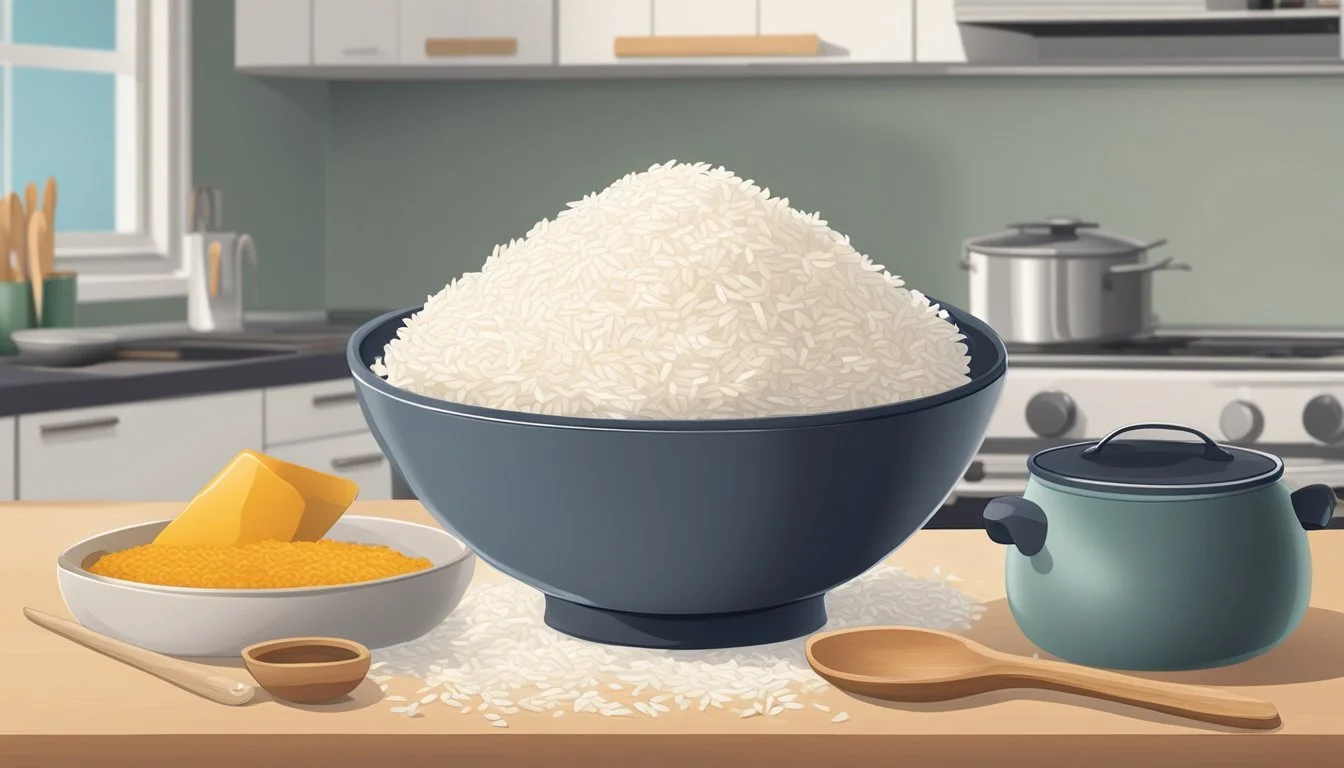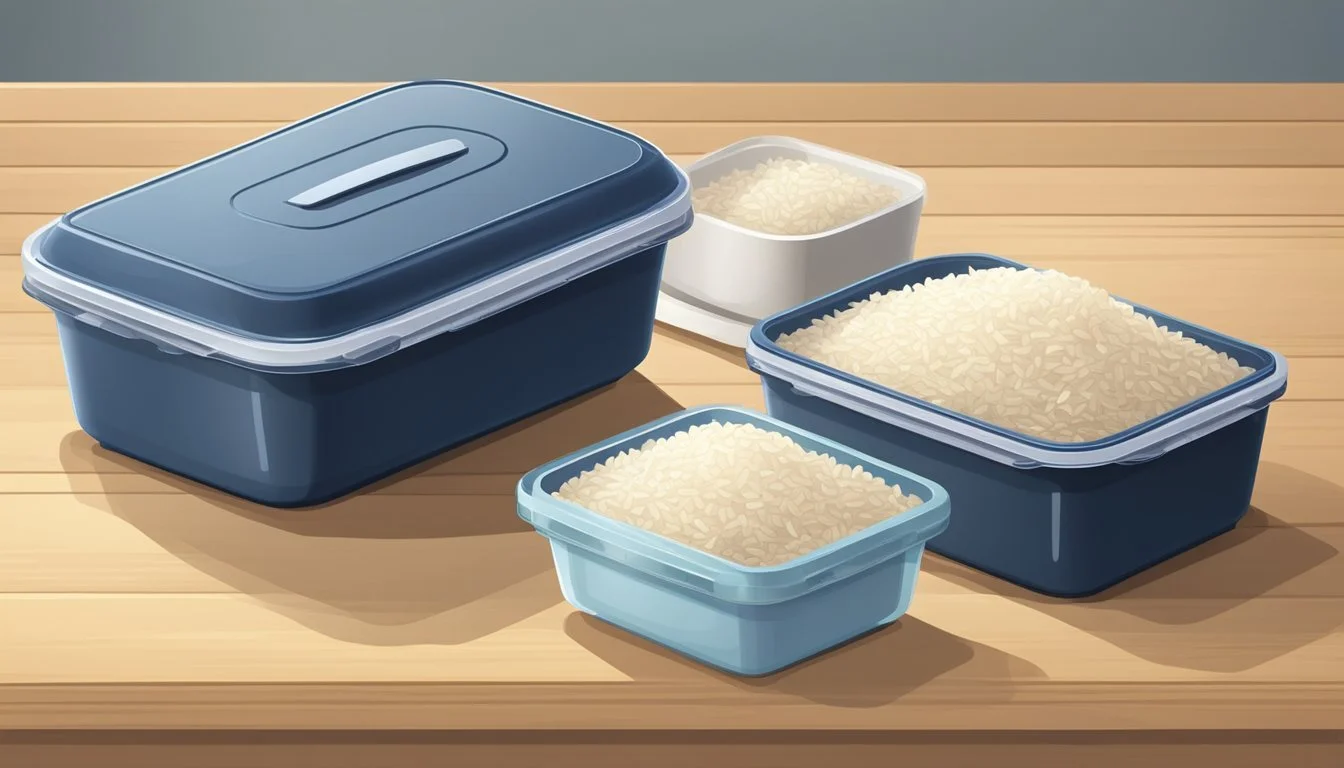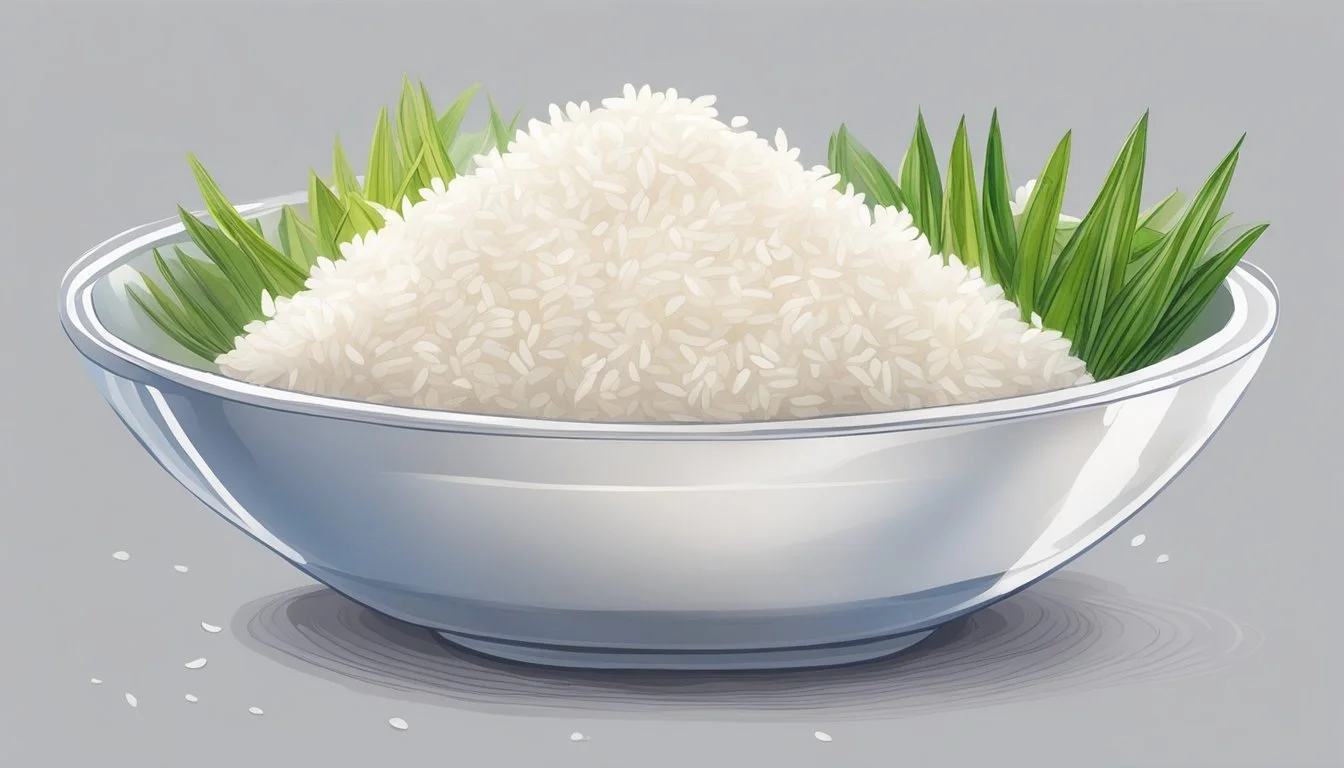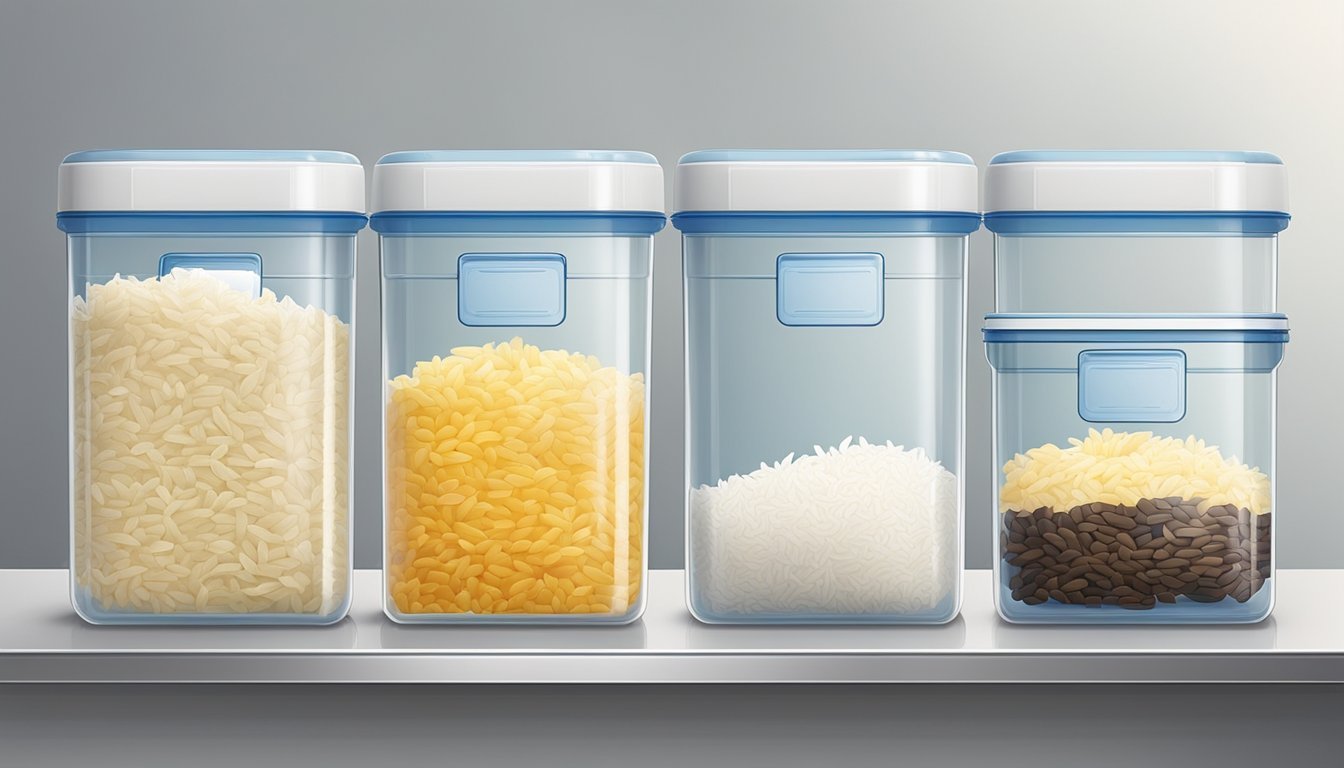How Long Does Cooked Rice Last?
Understanding Shelf Life and Storage Tips
Cooked rice (What wine goes well with rice?) is a staple ingredient in many households, offering a versatile foundation for countless dishes. After preparing a batch of this essential grain, it's important to understand the proper storage techniques to maximize its shelf life and maintain food safety. Generally, cooked rice may retain its flavor and texture for 3-4 days in the refrigerator. The key to achieving this lifespan is to ensure the rice is stored promptly and correctly.
Storage conditions play a significant role in preserving the quality and safety of cooked rice. It should be refrigerated in an airtight container or resealable plastic bag with excess air removed. This not only helps to maintain its moisture content but also limits the exposure to potential contaminants. As cooked rice is prone to bacterial growth, particularly the bacterium Bacillus cereus, it must be cooled and stored at a safe temperature rapidly after cooking.
Food safety considerations are paramount when dealing with cooked rice. To prevent foodborne illness, it's essential to refrigerate the rice as soon as it has stopped steaming and has cooled down enough to handle. Due to the potential for bacteria to thrive at room temperature, the window for cooling and transferring rice from the pot to the refrigerator is typically within two hours of cooking. This careful handling ensures that the rice remains safe to consume within the recommended timeframe.
Understanding Rice and Its Varieties
Rice, one of the most consumed grains worldwide, comes in numerous varieties each with unique qualities. Understanding these differences is crucial when considering storage life and culinary uses.
Characteristics of Different Rice Types
Long-grain rice typically remains separate and fluffy after cooking, making it ideal for dishes like pilafs. Short-grain rice, such as sushi rice, has a sticky consistency perfect for sushi (What wine goes well with sushi?) rolls. Medium-grain rice offers a balance between fluffy and sticky, often used in sweet dishes.
White Rice vs Brown Rice
White rice has its hull, bran, and germ removed, which extends its shelf life but reduces its nutritional value. Conversely, brown rice retains its bran and germ, providing more nutrients but a shorter shelf life due to the oils that can turn rancid.
Specialty Rices: Basmati, Jasmine, and Arborio
Basmati rice: A long-grain rice known for its fragrance and is commonly used in Indian cuisine.
Jasmine rice: A long-grain variety with a delicate floral aroma, often found in Southeast Asian dishes.
Arborio rice: A short-grain rice used in Italian risotto for its creamy texture due to high starch content.
Optimal Storage Conditions
Proper storage is crucial to maximize the shelf life of cooked rice. It's important to control temperature and moisture and use appropriate containers to ensure the rice remains safe to eat for as long as possible.
Refrigeration and Freezing
Refrigerated rice should be kept at or below 40°F (4°C) in the fridge to slow down bacterial growth. Cooked rice can be stored in the refrigerator for four to six days. When freezing cooked rice, make sure it is first cooled completely to prevent condensation and freezer burn. It's best to store rice in freezer-safe airtight containers or resealable plastic bags. Frozen rice can last for up to one to two months.
Airtight Containers and Bags
Storing rice in airtight containers or bags is key to prevent moisture and contaminants. Containers should seal tightly to keep out air and any potential moisture that could lead to mold growth. Vacuum-sealed bags can also be effective, especially for freezing, as they remove air and limit freezer burn.
Pantry and Room Temperature
Uncooked rice can be stored in the pantry at room temperature for an extended period as long as it's in a dry, air-tight container. It's important to keep it away from heat and light which can degrade the rice. Once the packaging is opened, the rice should be transferred to a sealed container to protect it from insects and moisture. Cooked rice, however, should not be left at room temperature for more than two hours to prevent bacterial growth.
Safety and Shelf Life
The safety and longevity of cooked rice are critical considerations for preventing spoilage and foodborne illness. Cooked rice should be stored properly to maintain its quality and to minimize health risks associated with bacterial growth.
Identifying Spoilage
Spoiled rice is often visible to the naked eye. Signs of spoilage include:
Mold Growth: Visible mold or a musty smell indicates contamination.
Texture Changes: Rice that has become slimy or dry and hard points to spoilage.
Strange Odors: An off or rancid smell is a strong indicator that rice is no longer safe to eat.
If any of these signs are present, the rice should be discarded immediately to avoid the risks of food poisoning.
Foodborne Illnesses and Preventive Measures
Cooked rice can harbor Bacillus cereus, bacteria that cause foodborne illnesses. Symptoms may include nausea, vomiting, and diarrhea. To prevent bacterial growth and reduce health risks:
Temperature Control: Keep rice out of the "danger zone" (40 °F to 140 °F) where bacteria thrive.
Storage: Refrigerate rice within two hours of cooking in airtight containers.
Reheating: Ensure rice reaches 165 °F thoroughly to kill potential bacteria.
Pregnant individuals and people with compromised immune systems should be especially cautious to avoid exposure to these contaminants.
Expiration Date and Rice Longevity
Cooked rice's shelf life is influenced by several factors, but typical storage times are as follows:
Refrigerator: 3-4 days for maintained quality and safety.
Freezer: Up to 6 months when frozen in an airtight container to prevent freezer burn.
It's important to note that while freezing prolongs shelf life by halting bacterial growth, it does not kill bacteria, and proper reheating is necessary upon thawing. Always ensure rice is stored properly to maximize both its freshness and safety.
The Process of Reheating Rice
Reheating rice can be simple and safe when the correct methods are applied to ensure food safety and maintain quality. Proper reheating techniques can bring leftover rice back to a piping hot and delicious state that's ready for consumption or inclusion in a new dish.
Safe Reheating Practices
One must reheat rice to an internal temperature of 165°F to eliminate potential foodborne bacteria. To achieve this, it's crucial to store rice properly, within 2 hours of cooking, and use airtight containers. The rice should be kept no longer than four to six days in the refrigerator. When reheating, add moisture in the form of water or broth to prevent the rice from drying out.
Reusing Leftovers: Meals and Side Dishes
Leftover rice serves as a versatile ingredient for various meals, such as stir-fries, burritos, or side dishes. When portioning the rice for reheating, only take out what will be consumed immediately to avoid reheating rice multiple times, which can compromise its quality and safety.
Reheating Methods: Microwave, Stove, and Oven
Microwave: Add 1-2 tablespoons of water per cup of rice and cover lightly. Warm for 3-4 minutes, ensuring the rice is evenly heated throughout.
Stove: Transfer rice to a saucepan, add liquid (approximately 1 tablespoon per cup of rice), and cover with a lid. Stir occasionally, and warm on low heat for three to five minutes.
Oven: Preheat to 350°F. In an ovenproof dish, mix the rice with a few spoonfuls of water, cover with a lid or aluminum foil, and warm for about 20 minutes or until thoroughly heated.
Each method should be monitored closely to avoid overcooking and to ensure rice reaches the appropriate temperature for food safety.
Extending Rice Shelf Life Through Freezing
Freezing is an excellent way to preserve cooked rice for extended periods, ensuring it remains safe and retains quality over time.
Freezing and Defrosting Techniques
For optimal preservation, one should cool the cooked rice quickly after preparation. Promptly transferring the rice to an airtight container or freezer bag is crucial, with a vacuum sealer enhancing longevity by removing excess air. A standard guideline is to allocate rice in portioned bags, lay them flat for even freezing, and ensure the freezer maintains a temperature of 0°F or below. To defrost, transfer the needed amount of frozen rice to the refrigerator and allow it to thaw overnight. For a quicker method, one can microwave the rice on the defrost setting.
Quality and Texture of Frozen Rice
When properly frozen, rice's texture can be maintained, making it a suitable addition to dishes like casseroles or rice pudding. However, the quality may vary depending on the rice type. White rice, with less bran and oils, typically freezes well, while whole grain variants might experience slight texture changes due to their higher oil content which can deteriorate over time. A sniff test can help ascertain its quality upon defrosting, as an unpleasant smell indicates spoilage.
Long-Term Storage Tips
Cooked rice can be stored in the freezer for a few months without quality loss if handled correctly. Key tips for long-term storage include:
Labeling: Always date and label frozen bags with content details.
Rotation: Practice first-in, first-out to ensure older rice is used first.
Temperature Monitoring: Keep the freezer temperature consistent.
Sensory Checks: Upon thawing, if the rice has an unpleasant smell, sniff carefully to detect signs of spoilage before use.
In summary, by following correct freezing and defrosting techniques, understanding the expected quality of frozen rice, and implementing long-term storage tips, rice can be efficiently preserved for extended use.
Practical Guidelines for Rice Storage
Effective rice storage is essential in maintaining its quality and ensuring food safety. This section offers practical advice on optimal storage practices for both cooked and uncooked rice, highlighting container selection, identifying signs of spoilage, and managing rice as a pantry staple.
Portioning and Container Selection
One should portion rice into practical amounts before storage. For cooked rice, it is imperative to store it in an airtight container to prevent moisture and contaminants from affecting its quality. Uncooked rice benefits from storage in a sealed container, ideally in a cool, dry place such as a pantry. This preventative measure shields rice from insects and preserves its freshness.
Signs of Degradation and When to Discard
Cooked rice exhibits certain tell-tale signs when it is no longer safe to eat. These include an unpleasant smell, a change in texture to mushy or dry, and sometimes discoloration. If any of these are observed, the rice should be discarded. When uncooked rice shows signs of infestation or has a rancid smell, it, too, should be thrown away. Practical food safety first.
Rice as a Pantry Staple: Usage and Rotation
Rice serves as a versatile pantry staple, fitting into diverse meals from chicken and rice dishes prepared on the stovetop to more complex cuisines. It's crucial to track and rotate your stock, using older rice first to ensure freshness. Keep dry rice in a stable, cool environment and incorporate it into your regular meal planning to prevent waste and guarantee its top quality for every use.





